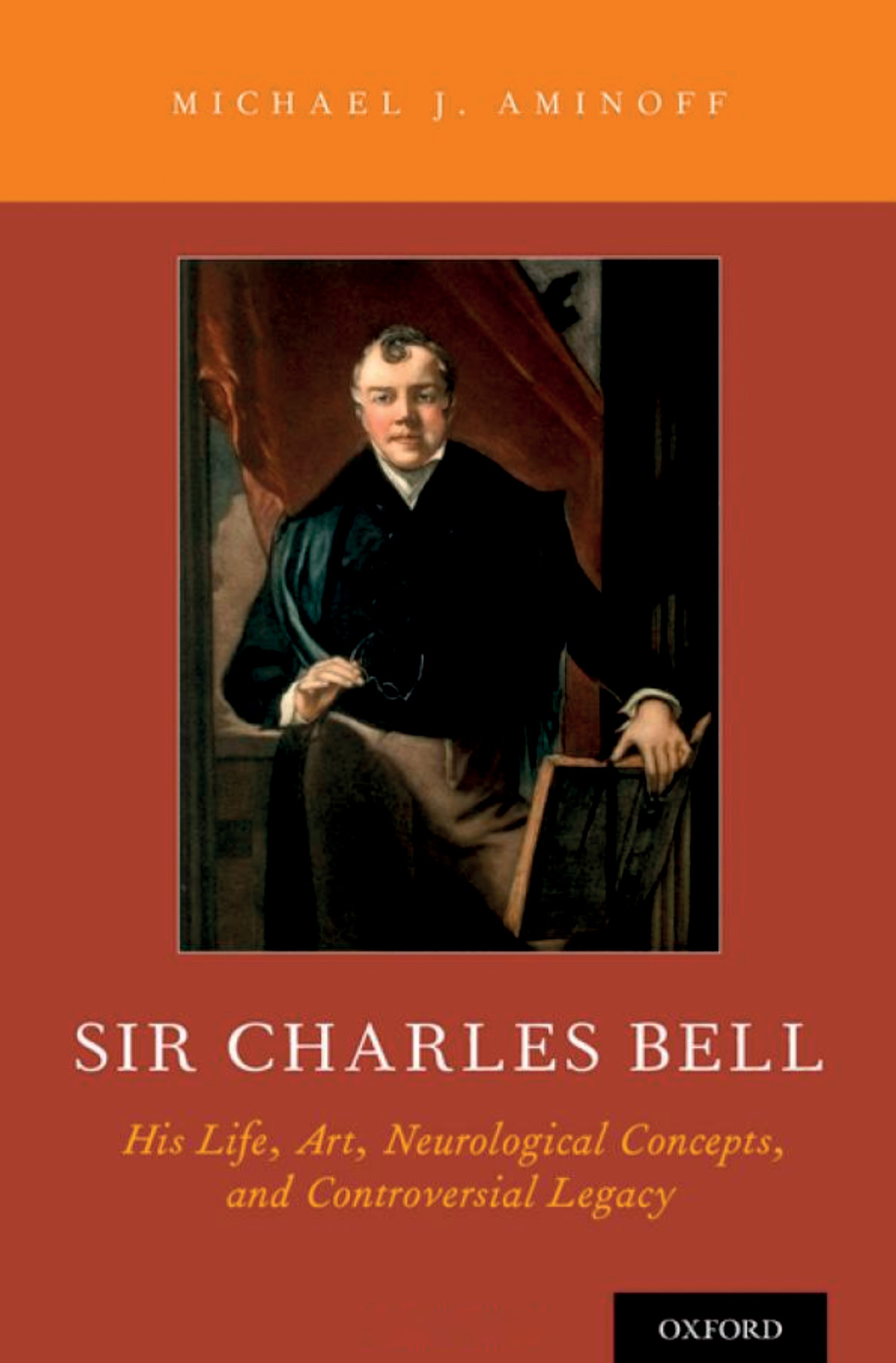The biography of Sir Charles Bell by Michael Aminoff is a win-win at least in the sense that both the subject and author may be considered to be “one of us”. Although associated with the Royal College of Surgeons, Bell can be considered a Clinical Neuroscience practitioner in the modern sense (of blurred boundaries between the ‘crafts’ of diagnosis and intervention). Aminoff, likewise it seems, is a British Neurologist/Neuroscientist; having known his name from several North American tomes, I only now realise(-ize) that he is British born, bred and trained!
The volume benefits from a pleasing size (just over 200 pages), excellent writing and numerous well-judged illustrations. And then, of course, there is the interesting context of the subject’s life, straddling the political and academic medical centres of Edinburgh and London in the late 18th century and the early to mid-19th. The first line of a book’s last chapter is as good an indicator of its potential as any: ‘Bell was born when America was still a British colony and France still had a king.’
Of course I knew about Bell’s palsy, and Bell’s phenomenon, but I really hadn’t known very much about Bell’s life and general academic output before this book. I was fascinated to read that he wrote on the ‘Expression of Emotions’ (Chapter 4), on the relevance of the anatomy of our facial muscles for Art, which seems to resonate with such modern concepts as mirror neurons and social cognition. While I’ll avoid spoiling the fun by relaying the whole list of Bell’s neuroanatomical and clinical insights (Chapters 8 and 9 respectively), you should know that they’re impressive. And Aminoff argues that we revere Bell less than we should, because of the misjudgements of his later career.
But we cannot expect a fellow Neurologist to be impeccably objective in his role as an amateur historian: Aminoff is clearly in the Bell fan club. He gives a generous account of Bell’s interference with his own writings to justify primacy in discovery (of the motor and sensory functions of the anterior and posterior spinal roots). I even note that Magendie, Bell’s competitor, is described in the most grisly manner, conducting vivisection experiments on puppies … which he had been given as a Christmas gift, on no less portentous a page of the book than 101.
This autumn, many of us may take the opportunity to reflect on social and economic pressures upon scientists and clinicians. Bell’s self-referential approach to scientific progress and his acceptance of presenting Science in relation to Belief (Christian belief that is, in the Bridgewater treatises) seem rather familiar. In Bell’s case, his misjudgements led to a retirement that was earlier and quieter than he might have wished it to be. Aminoff’s generous view (which I tend to share) that Bell’s mistakes were less than egregious, and less numerous than his achievements, must in part be due to the kindness that comes with the passage of time. It may also be that the truly egregious challenges of public scientific discourse in the present day make Bell a somewhat more sympathetic persona for us.
So, please go to one of Aminoff’s textbooks if you want to learn Neurology. But, if looking for a stimulating Christmas read, for yourself or for the recipient of a gift, go for this. And if you also get a puppy this Christmas, please look after it better than Magendie did his.
